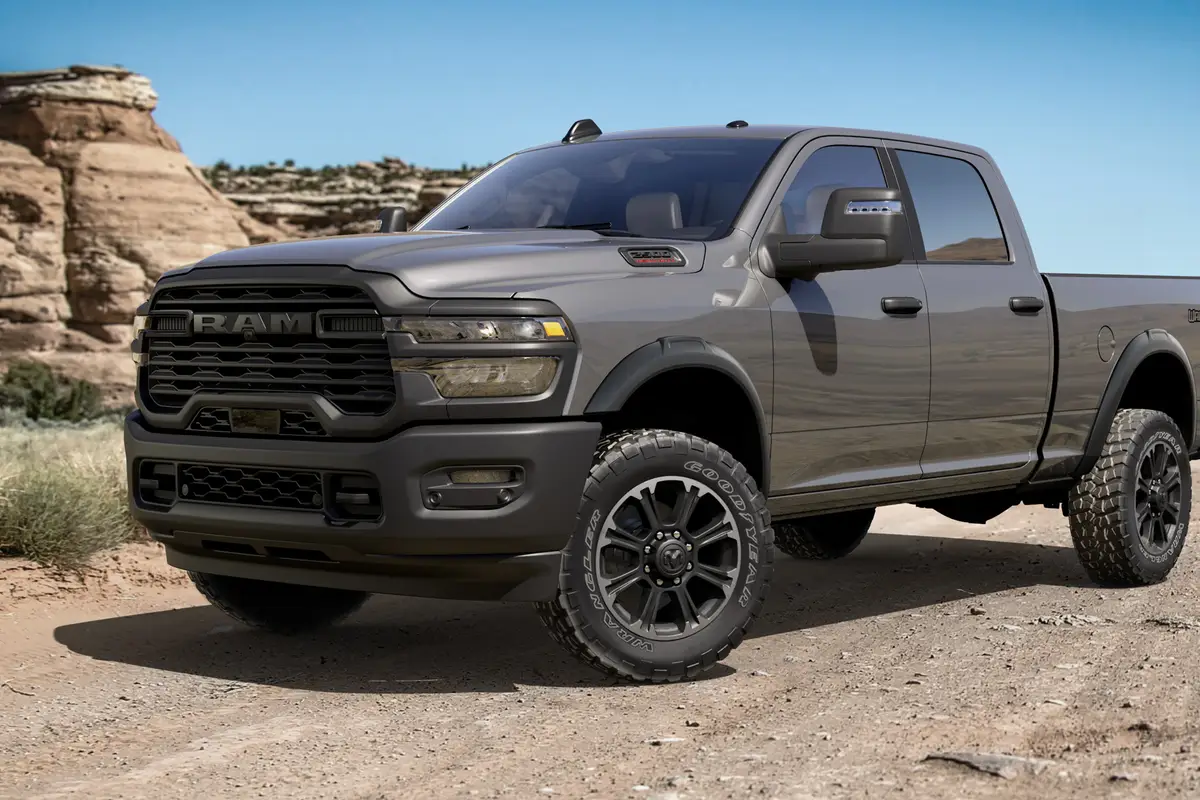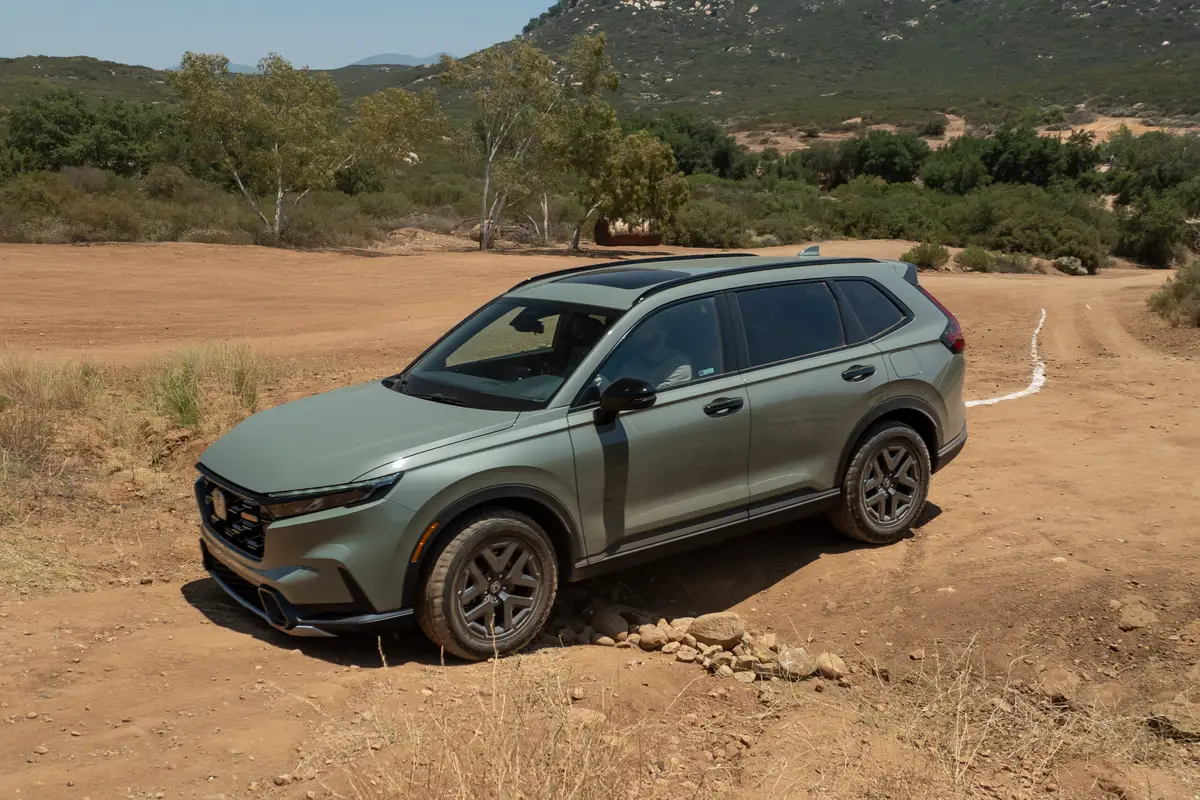Cincinnati.com's view
With this week’s test, we’ll conclude our look at GM’s new mainstream large cars. Having tried the Chevrolet Impala and Buick LeSabre, we move to the Pontiac Bonneville, which like the others, was redesigned for the 2000 model year. It’s always interesting to see how disparate designers can work with a common platform and bend it to their will. The folks at GM, with its multi-divisional structure, have gotten quite good at it.
Under my no-wait policy, I’ll tell you up front this is my favorite of the three, although that does not mean it will be the best choice for everyone. I like the distinctive, aggressive styling – unusual for a big car and, I admit, probably off-putting for a majority of buyers, who are of an age and social position such that the more restrained Buick rendition might be more comfortable. But perhaps because I see as many new cars as I do, I give extra points to those able to shed the cookie-cutter look.
Pontiac says the target demographics for the Bonneville are preponderantly males, 45-50 years old, about half college graduates, less than half professionals, with a household income in the $70,000-$90,000 range. Implicit in the choice of a full-sized car is the need to haul friends or family frequently.
The Bonneville is served up in three series, SE, the fancier SLE and the supercharged SSEi. I was given an SLE to play with for a week and actually I was glad it wasn’t the SSEi. The question is, how adequate is the standard six-cylinder engine in a car this large? In days of yore, a V-8 was de rigueur for the dreadnoughts. Well, this is the tough old 3.8-liter V-6, which has had more massages over the years than the idle rich and remains, for all its uncluttered simplicity, one of the most appealing energy sources.
It doesn’t have any of that fancy European or Japanese valve gear, no, it’s an overhead valve design and two per cylinder were good enough for Pappy, so they ought to be good enough for us. It sends the front wheels 205 horses and 230 foot-pounds of torque and it works for peanuts, the automotive equivalent of which is regular unleaded. With a curb weight of more than 3,600 pounds, those horses occasionally work up a lather, but they never pull up lame. The torque curve resembles a slightly bowed tabletop between 1,000 and 6,000 rpm, meaning, you step on the gas, it goes, whatever the speed. A little bump is perceptible at 4,000 as breathing optimizes. Launch feel is stronger than the numbers suggest, thanks to a low first ratio and a tightly-wired throttle.
Smashing the accelerator from a standing start to verify that 0-60 times are in the eight-second domain, I felt just a smidge of torque steer, but on the whole, the traction control and general front-end geometry kept rude surprises pretty much at bay. That is not to say that the extra 35 horses and 50 foot-pounds of torque supercharging adds to the mix wouldn’t be useable, even welcome at times, but there’s another number to consider: price. Bonnevilles come well freighted with options in their most basic form, but most buyers typically choose a handful of extras from the smorgasbord GM likes to lay out. “Popularly equipped,” then, the models line up like this: SE, $25,700; SLE, $30,300, and SSEi, $33,825, all including freight. The SSEi has a number of enhancements over the SLE level, none of them crucial, so $3,500 strikes me as a lot to pay for the extra go power. Perhaps the Bose stereo upgrade and the StabiliTrak traction improving system will be convincing deal-sweeteners, but don’t think you will NEED the power.
Once under way, the Bonneville is responsive, even eager feeling. When I first drove it over rough roads, temperatures were hanging in the single-digit range and the suspension seemed unyielding, but as the shock fluids warmed up, it started to feel just a bit soft for the exertions I was asking of it. Driven as most people drive large cars, it would be a fine synthesis of comf and handling, not quite so cushy as its Buick stablemate, but more controlled than the comparable Chevrolet.
The transmission is superb, handling even rapid on-off bursts of power with aplomb and largely escaping notice in routine driving. But usability has been sacrificed on the altar of fuel economy. Gearing is so high that the car feels as if it’s running away not just in overdrive (fourth), but even in third, and second provided only slight retardation on downgrades. I found that unpleasant, even unnerving, and would gladly sacrifice a few mpg for different second and third gear ratios. This is a generic GM fault.
EPA smiles on the Bonneville with ratings of 19 mpg city, 30 highway, and I logged 24.7 in rather earnest country driving with a few freeway runs thrown in. That’s an impressive fuel-economy achievement, but I’d prefer to get my jollies between fuel stops.
The interior of the Bonnie is appealing if you like busy, with the driver’s accommodations borrowing heavily from the F-16 school of design. It looks as if the interior was designed by a committee and everybody got a vote. A little restraint on the minor details would better focus attention on the essentials. The gauges are packaged in a large cluster and voltage and oil pressure readouts supplement the basic four. Diodic displays are used for the cumulative and trip odometers as well as the trip computer. The general scheme is orange needles on a black background with white markings – attractive and highly readable. I was pleased to see there’s a gear selection indicator amid the main instruments, but found the bright yellow used to indicate the chosen cog was distracting at night.
I was surprised to find a bare minimum of overhead clearance with the power driver’s seat in the middle of its vertical range. The power moonroof claims some interior space for itself, so watch out when flying over those whoop-de-dos, or if excessively tall, consider eschewing the hole in the roof. Legroom was more than adequate up front, suggesting that even lanky folks could be reasonably well accommodated in the rear. The SE model Bonnie can be had with a front bench seat, which allows GM to call this a six-passenger sedan, but they don’t try to foist that fantasy on the buyers of the higher grades, equipping them only with front buckets of varying adjustability.
Notable among the equipment list are the side-impact air bags for driver and co-pilot, which augment the depowered front bags. GM rates a salute for putting those even in the base series. SLE-level machines come with 17-inch alloy wheels shod with hefty 235/55 rubber. These produced a nice contact patch which paid off in traction on surfaces both wet and dry. They also gave the four-wheel disc brakes and antilock something to work with. Brake pedal feel was good and braking force was easily modulated for smooth, controlled stops in a reasonable distance. Successive high-G deceleration runs produced n o discernible fading, and the antilock was well-behaved. The steering was numb, but had good self-centering and tracked a course down the highway without excessive correction.
The stereo on the tester was an upgrade – not to the Bose level, but up a notch from basic – and featured an equalizer which helped tune the set to the car’s interior, although the display was a model of miniaturization that would frustrate any but the lucky 20/20 folks.
The Bonneville is assembled at the Lake Orion, Mich. plant, and the folks did a good job. If money is paramount, the Impala stands out among GM’s mass-market large cars, though it’s rather boring in looks and feel; the LeSabre would please those who hanker for the old-style, American large car feel; the Bonnie for those who like a little fun with their transport. The test vehicle had a power moonroof, $980; leather seating surfaces, $850; radio upgrade, $200; traction control, $175; universal garage door opener, $100, and frotlc nse plate depression cover, $10. Total, with freight, was $30,310.
“The Gannett News Service”
Latest news



